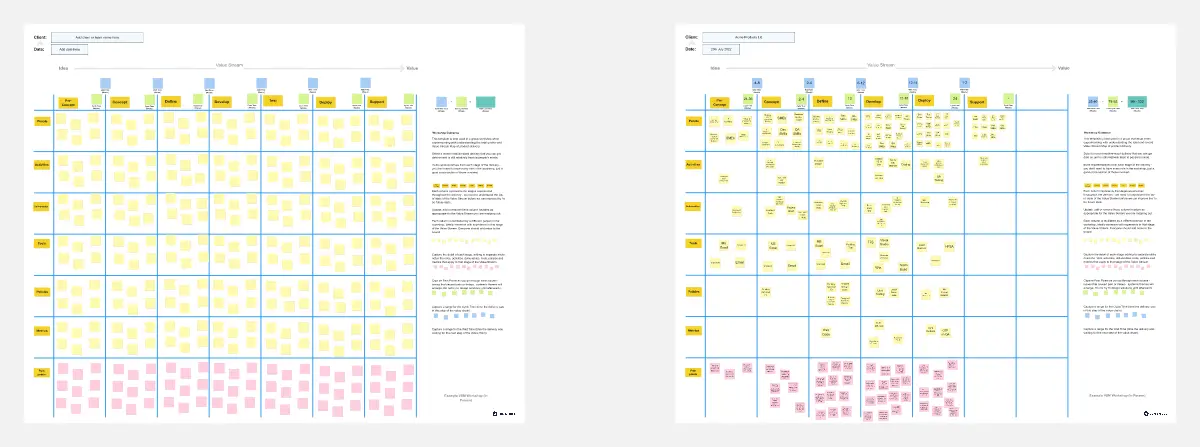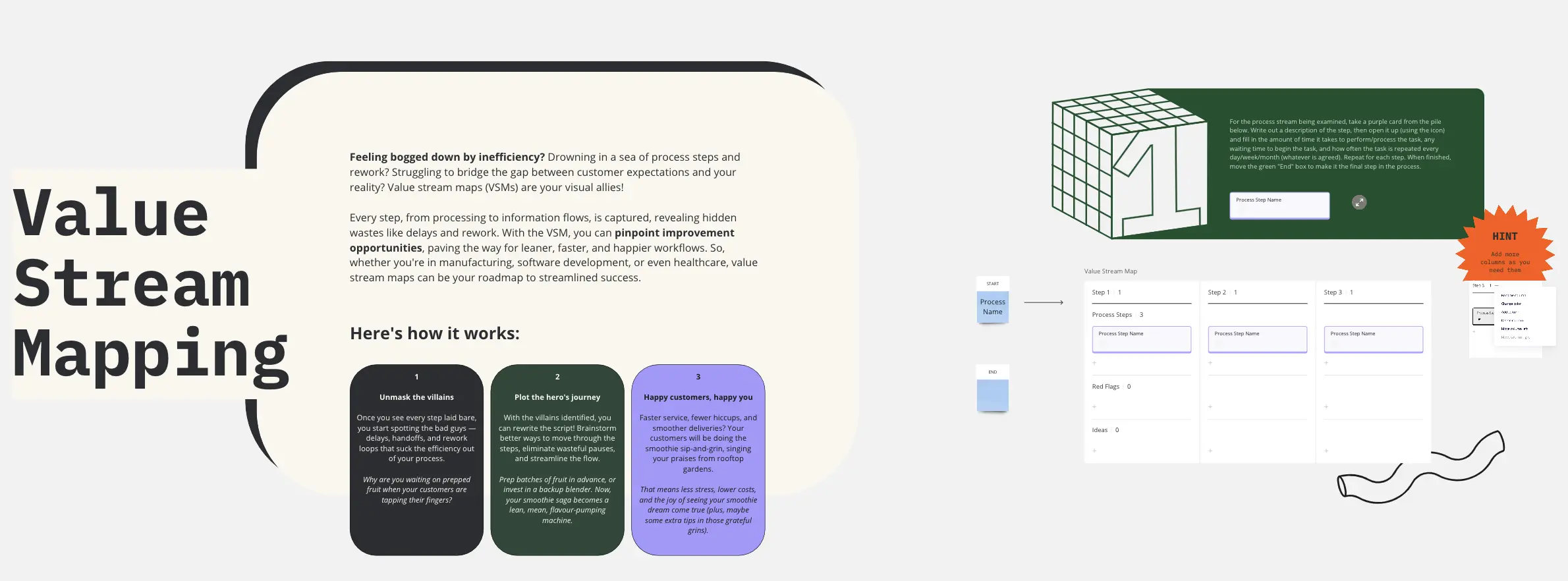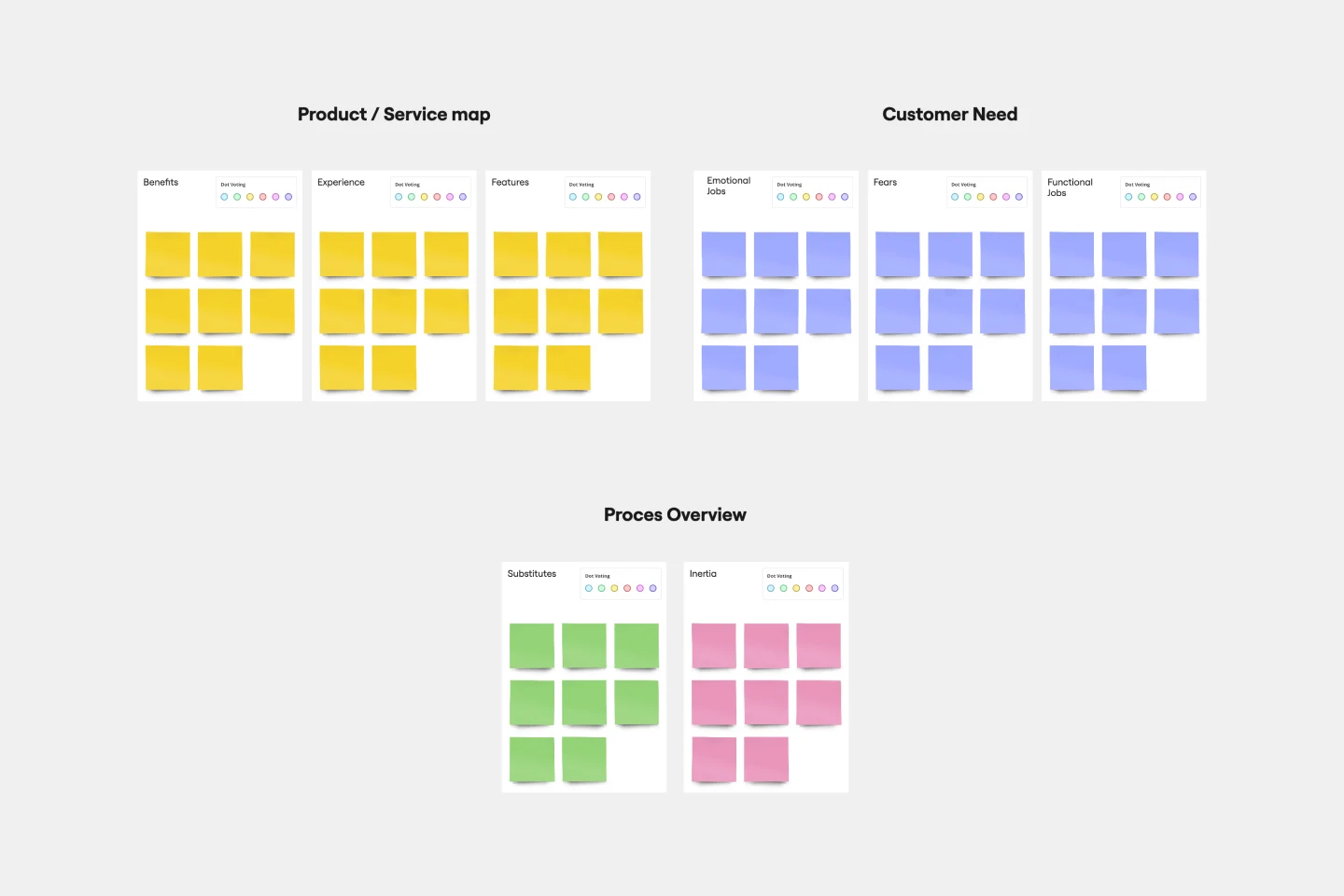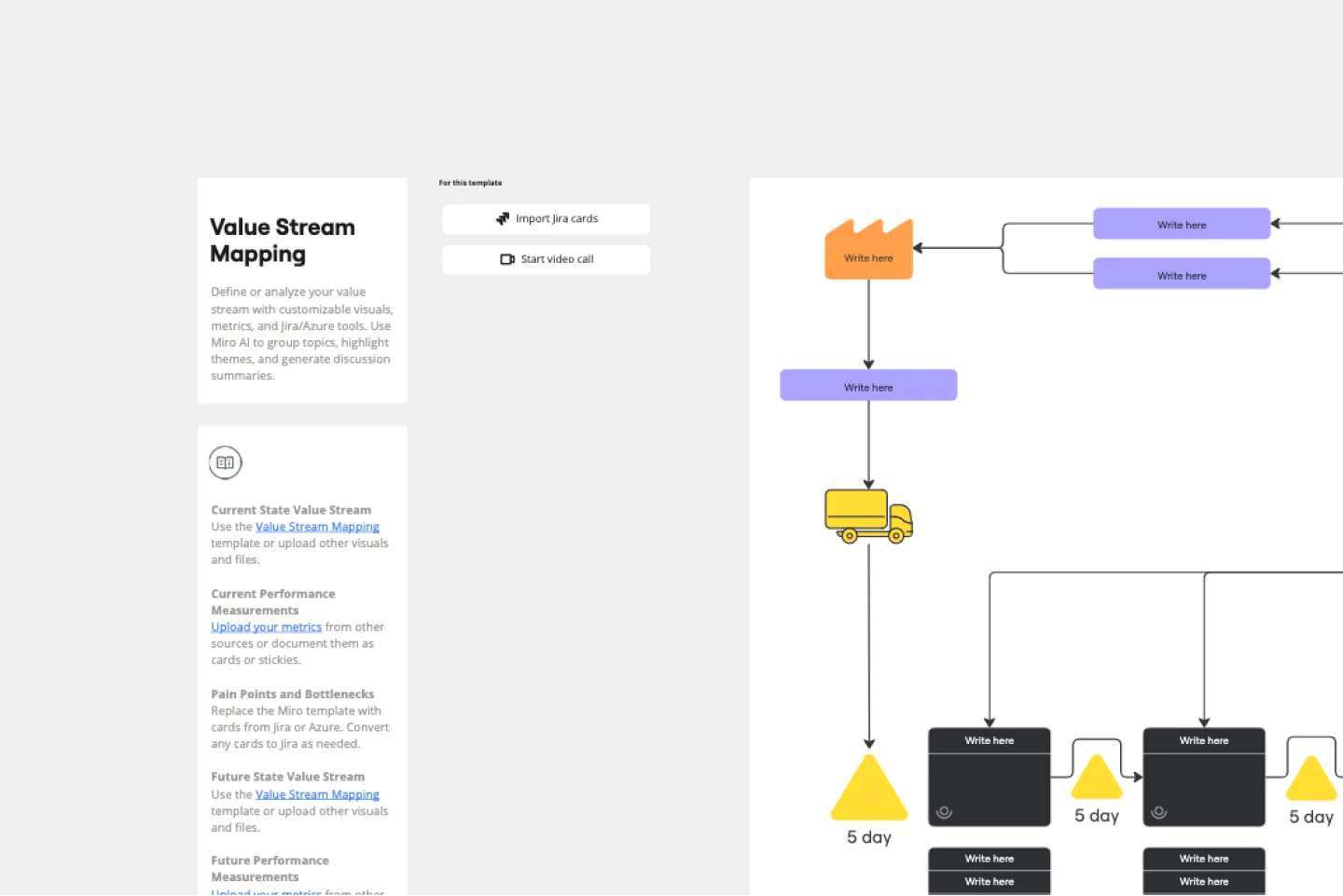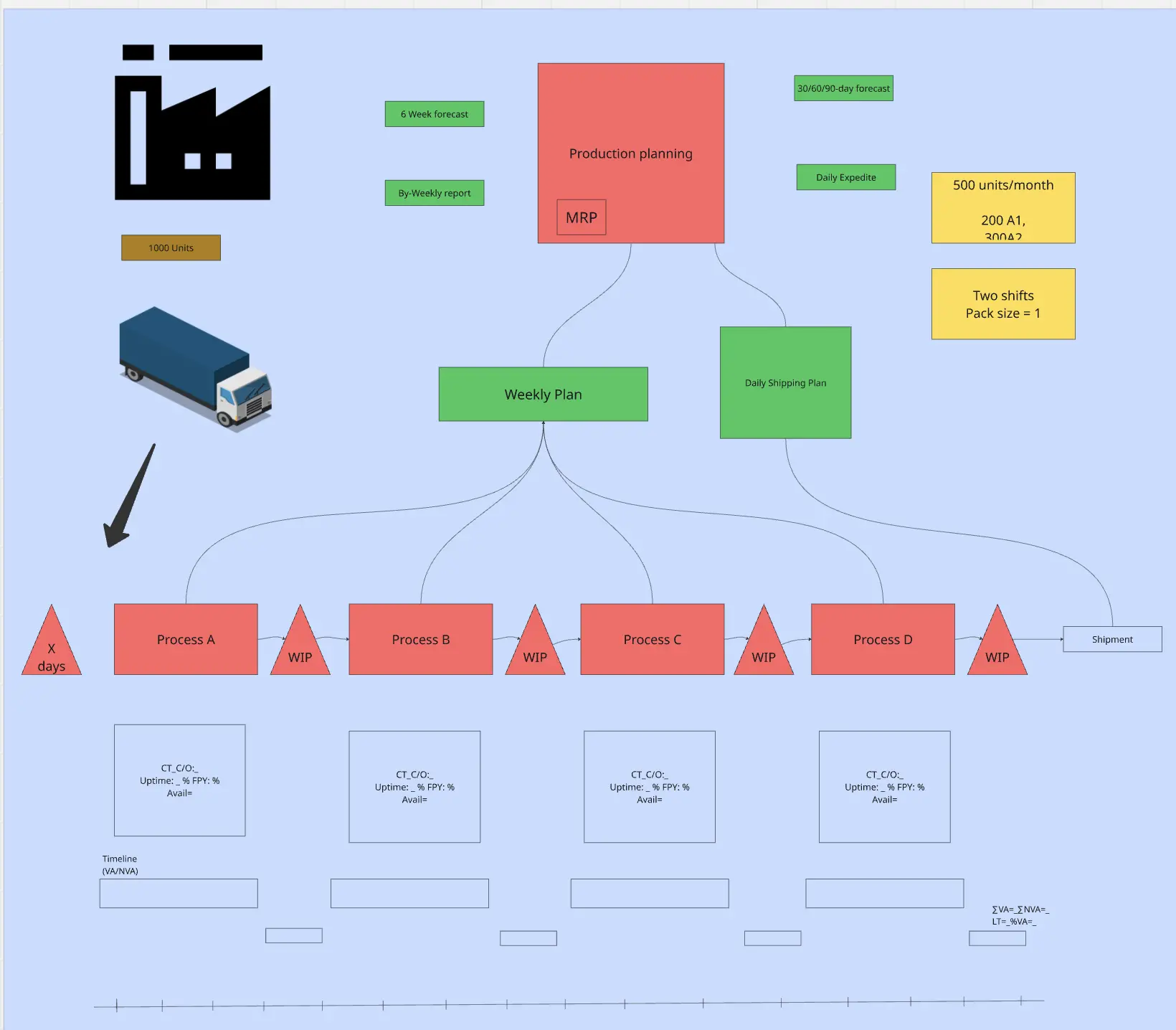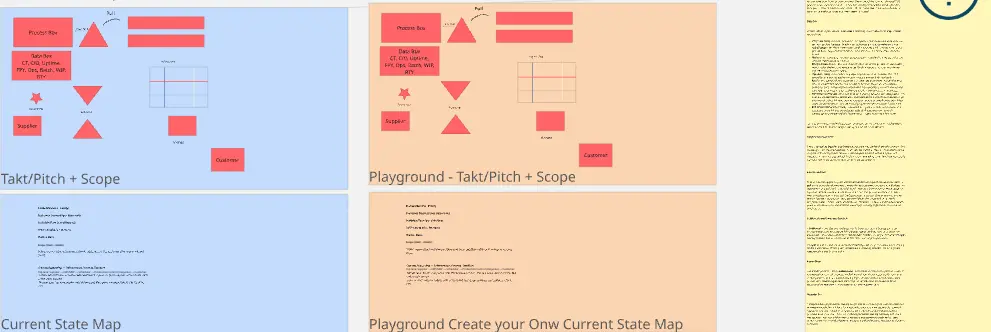About the value stream mapping templates collection
Our value stream mapping templates are designed to help teams visualize and optimize their workflows. These templates provide a structured approach to identifying inefficiencies and areas for improvement, making it easier for teams to streamline their processes and enhance productivity. Whether you're new to value stream mapping or looking to refine your existing practices, Miro's templates offer a user-friendly and effective solution.
Why you'll love our value stream mapping templates
Using Miro's value stream mapping templates comes with many benefits:
Ease of use: Designed with beginners in mind, these templates are intuitive and easy to navigate, allowing you to focus on mapping your processes without getting bogged down by complex tools.
Advanced diagramming: Leverage Miro's advanced diagramming capabilities to create detailed and precise value stream maps. This helps in accurately identifying bottlenecks and areas for improvement.
Collaboration: Miro's collaborative features enable team members to work together in real-time, ensuring
that everyone is on the same page and contributing to the process.
Customization: Tailor the templates to fit your specific needs. Add or remove elements, adjust layouts, and incorporate your own data to create a value stream map that truly reflects your workflow.
Visualization: Transform complex processes into clear, visual representations that are easy to understand and communicate to stakeholders.
How to use the value stream mapping templates in Miro
Select a template: Start by choosing a value stream mapping template from Miro's template library. You can find templates that cater to various industries and use cases.
Define your process: Identify the process you want to map. This could be anything from product development to customer service workflows.
Map the current state: Use the template to map out the current state of your process. Include all relevant steps, activities, and information flows.
Identify bottlenecks: Analyze the current state map to identify any bottlenecks or inefficiencies. Look for areas where delays occur or resources are underutilized.
Design the future state: Create a future state map that outlines an optimized version of your process. Incorporate improvements and changes that address the issues identified in the current state.
Implement changes: Use the insights gained from your value stream maps to implement changes in your workflow. Monitor the impact of these changes and make further adjustments as needed.
Following these steps, you can use our value stream mapping templates to improve your team's efficiency and productivity. These templates not only help visualize and understand your processes but also provide a clear path for continuous improvement, enabling your team to thrive.
